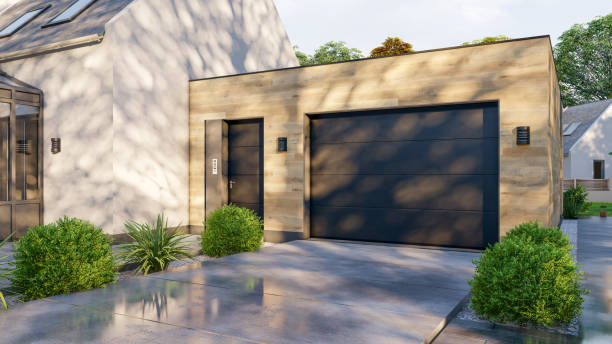Many avoid log cabin homes because they think that log cabins are more flammable than average homes. However, this isn’t the case! Frontier Log Homes wants you to know that log cabin homes are just as safe as average homes, and an understanding of how fire risk works in a home can help ease those worries.
Temperature Makes a Difference
First off, it takes quite a bit of temperature and energy to catch a full log on fire. In fact, most small fires are not hot enough to generate an ignition. A solid piece of wood is a compressed material. There is no airflow inside it. And fire needs both fuel material and oxygen to grow. This is why many times people need some kind of fire starter chemical or agent in a fireplace, or even crumpled paper to generate sufficient ignition heat. That said, modern living has plenty of material that can do the trick.
Our Lifestyle and Plastics
Unlike homes some 40 or 60 years ago, today’s homes include a lot of products that are made of plastics. Carpeting, drapes, furniture covers, kitchen appliances, and more use an incredible amount of petroleum-based products in their assembly. These items and their components are far more prone to catch fire with a home ignition. And when they do, they burn hotter. That’s the temperature level that is then needed to cause a structure to burn. This is proven again and again with industrial fire testing, especially in how fast a modern home catches fire and goes to flashover temperatures (critical level) versus older organic materials. So, in a nutshell, the risk of a home fire isn’t automatically increased by the structure being made of logs; it’s increased by all the plastic we have around us.
Second, modern log homes use materials that have been treated for fire resistance. Log homes constructed today are not simply raw wood. Each component prepared for use in a residential structure and fabricated to meet industry standards for such use. That includes fire safety requirements that anticipate home use causes.
Fire Needs Air and Gaps to Spread
Unlike a tract home, which uses a combination of framing, foam insulation, and drywall interior surfacing, log homes are built with a wall and frame structure that is thick, compact, and solid. Hollowed-up framing creates pathways for fire to travel. The same can’t happen in a modern log home. Instead, the fire can only scorch the outside, the exposed surface of the log. While it may char, it won’t automatically lose integrity or structure strength. The same can be seen in forest fires. While the ground brush, dead leaves, bushes, and the bark of trees burn immediately, the trees themselves survive due to their thickness. It’s only when the heat of a fire is so intense, that even solid wood will burn, just like a log in a fireplace. It takes a lot of energy to get to that kind of heat level, but when it does, even a log home will burn eventually.
So, it could be argued, given the above, that a modern log home may actually be safer than a standard residential home in suburban projects, especially given today’s frame designs.




Leave a Reply
You must be logged in to post a comment.